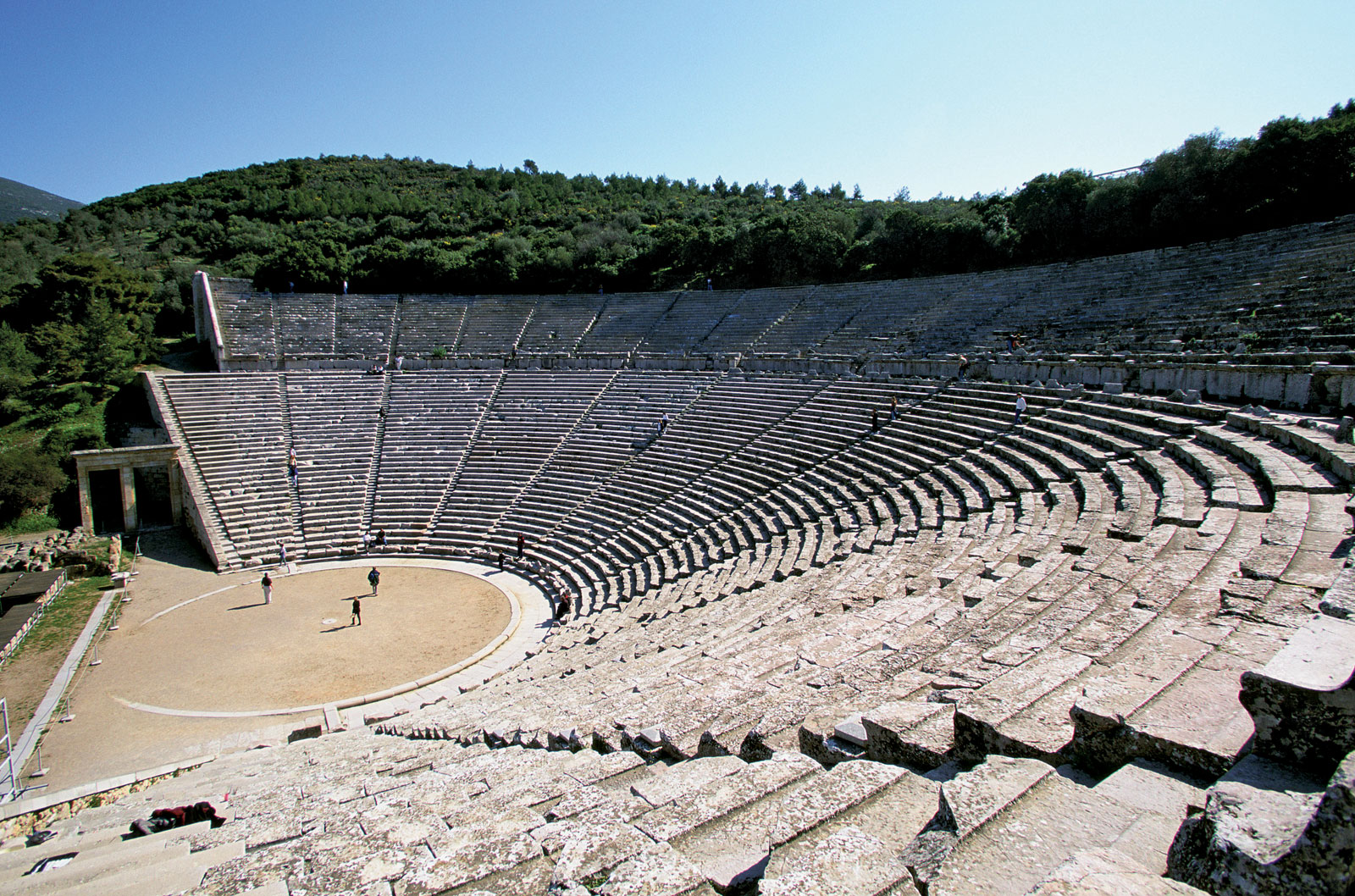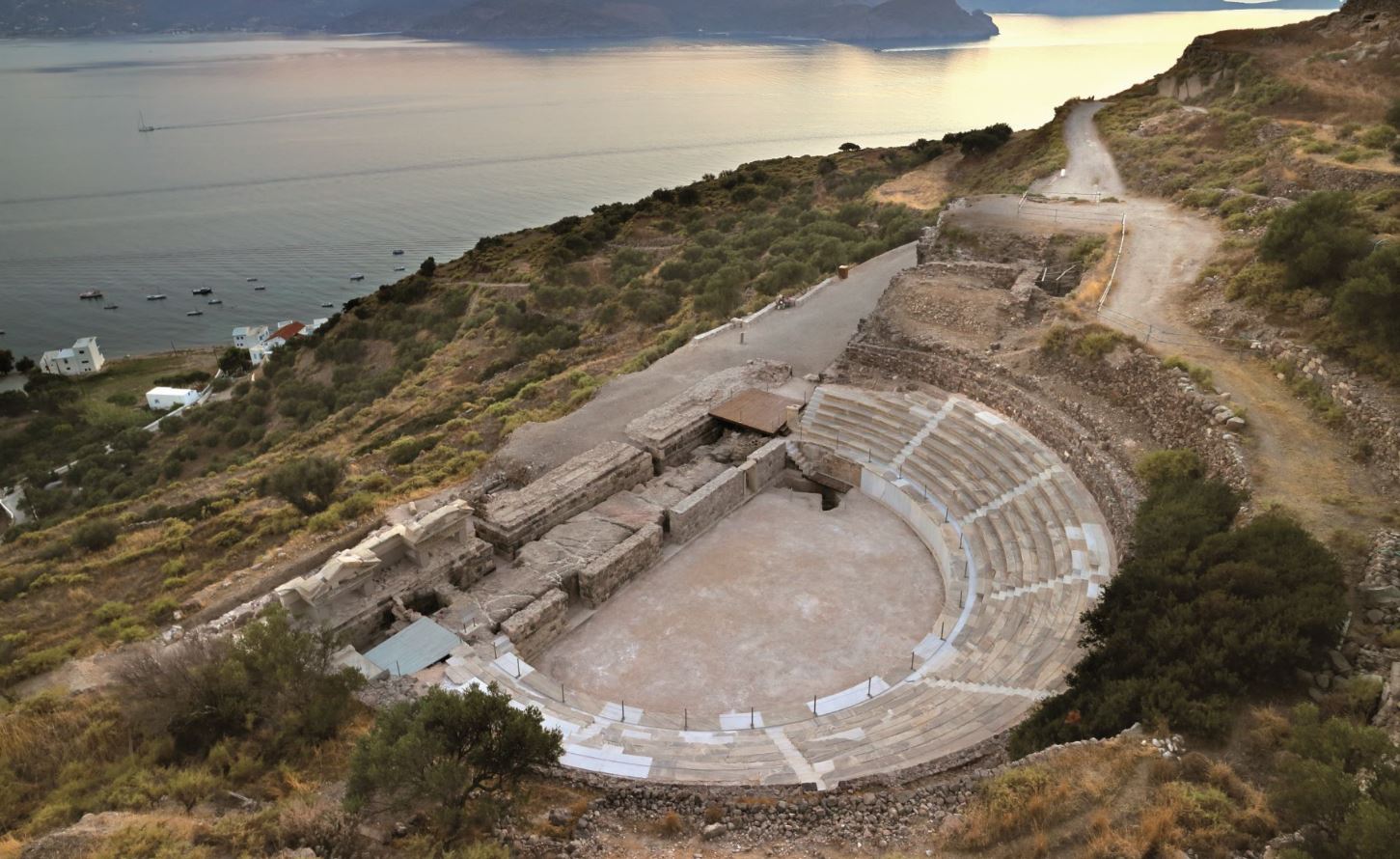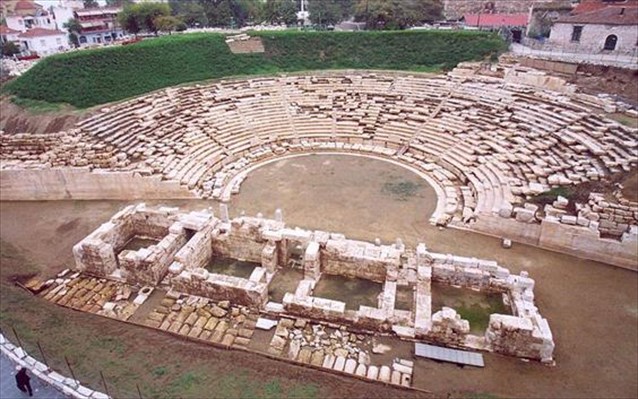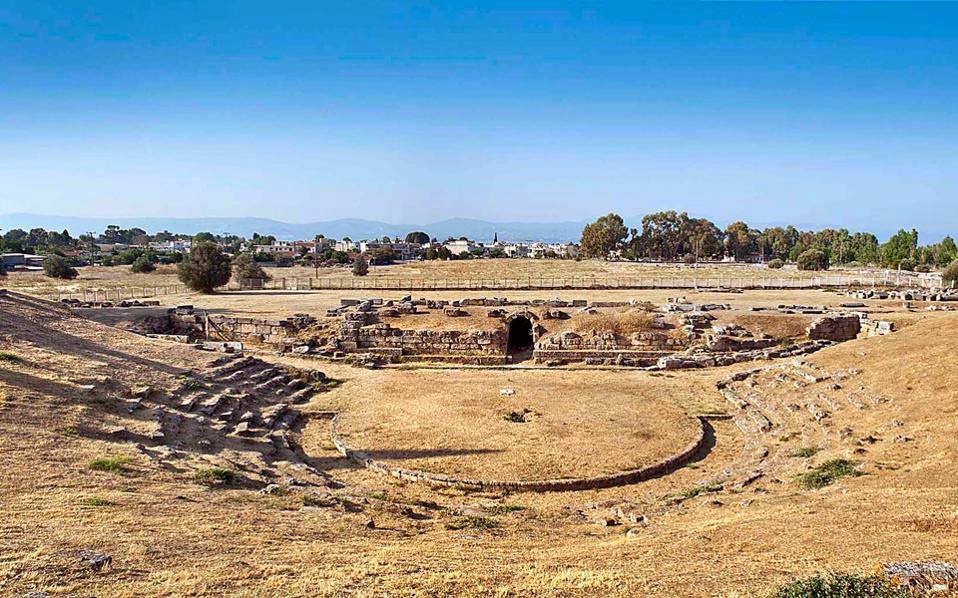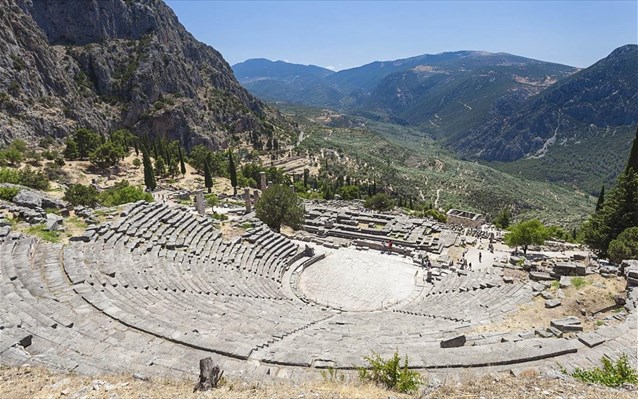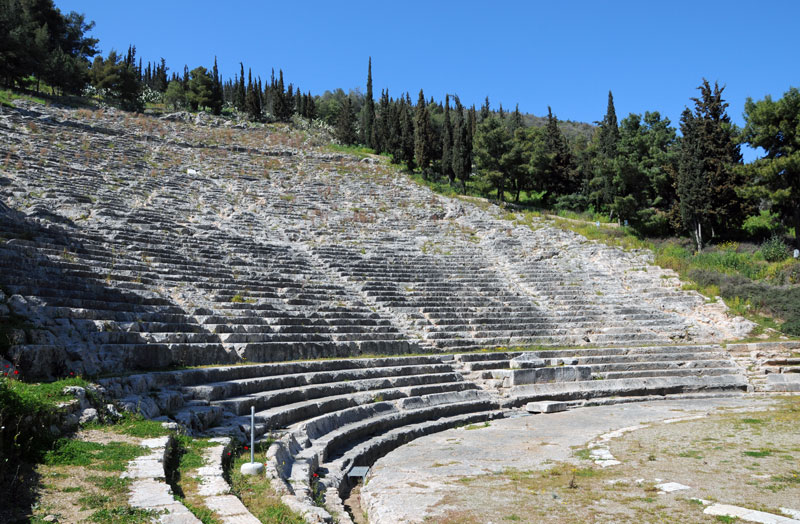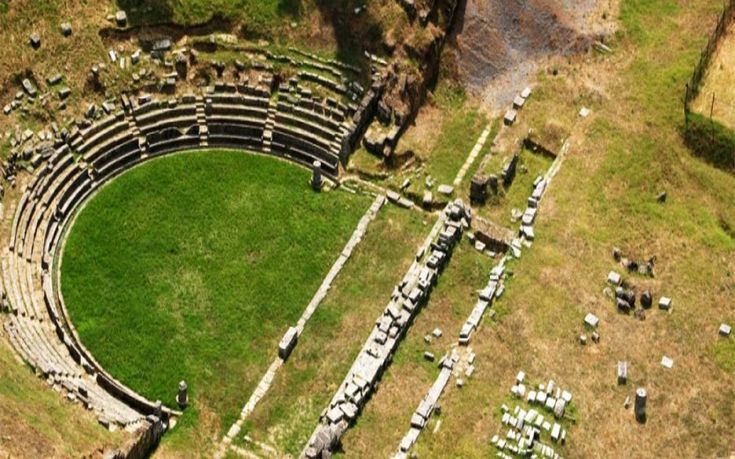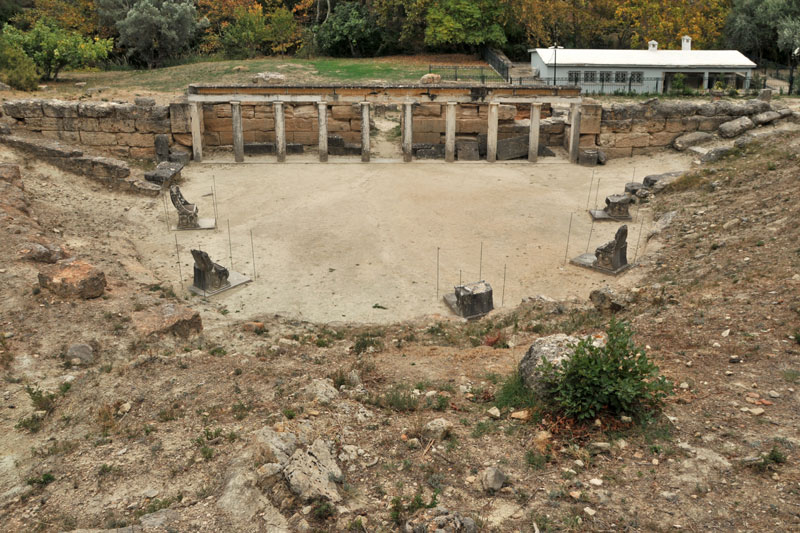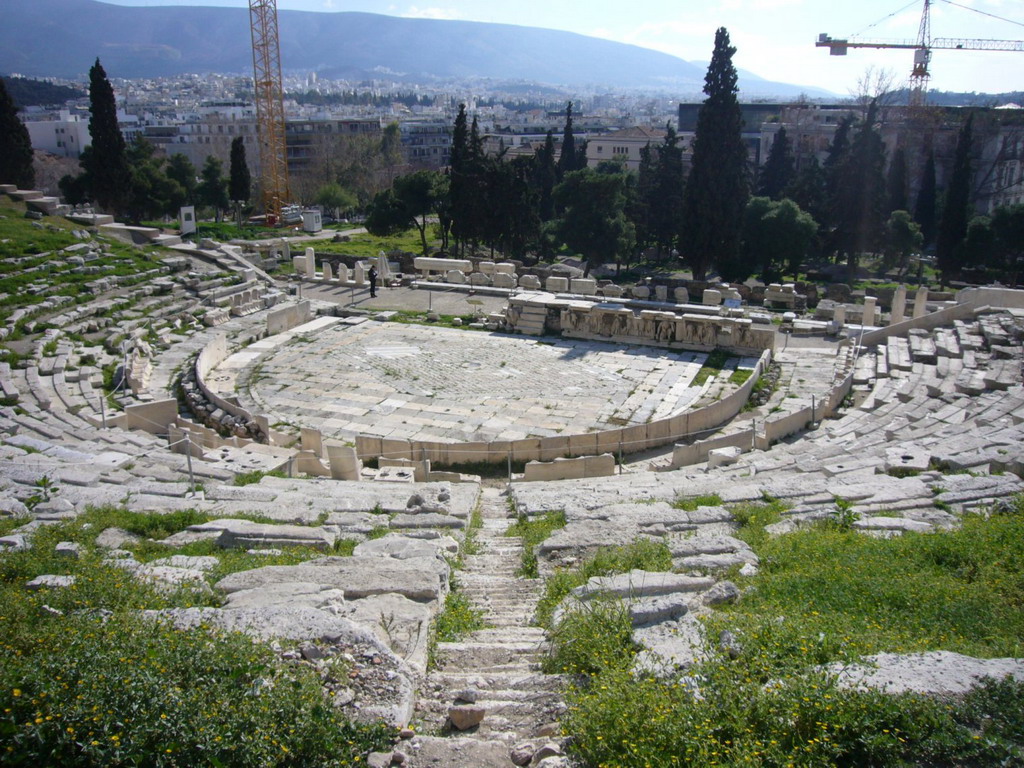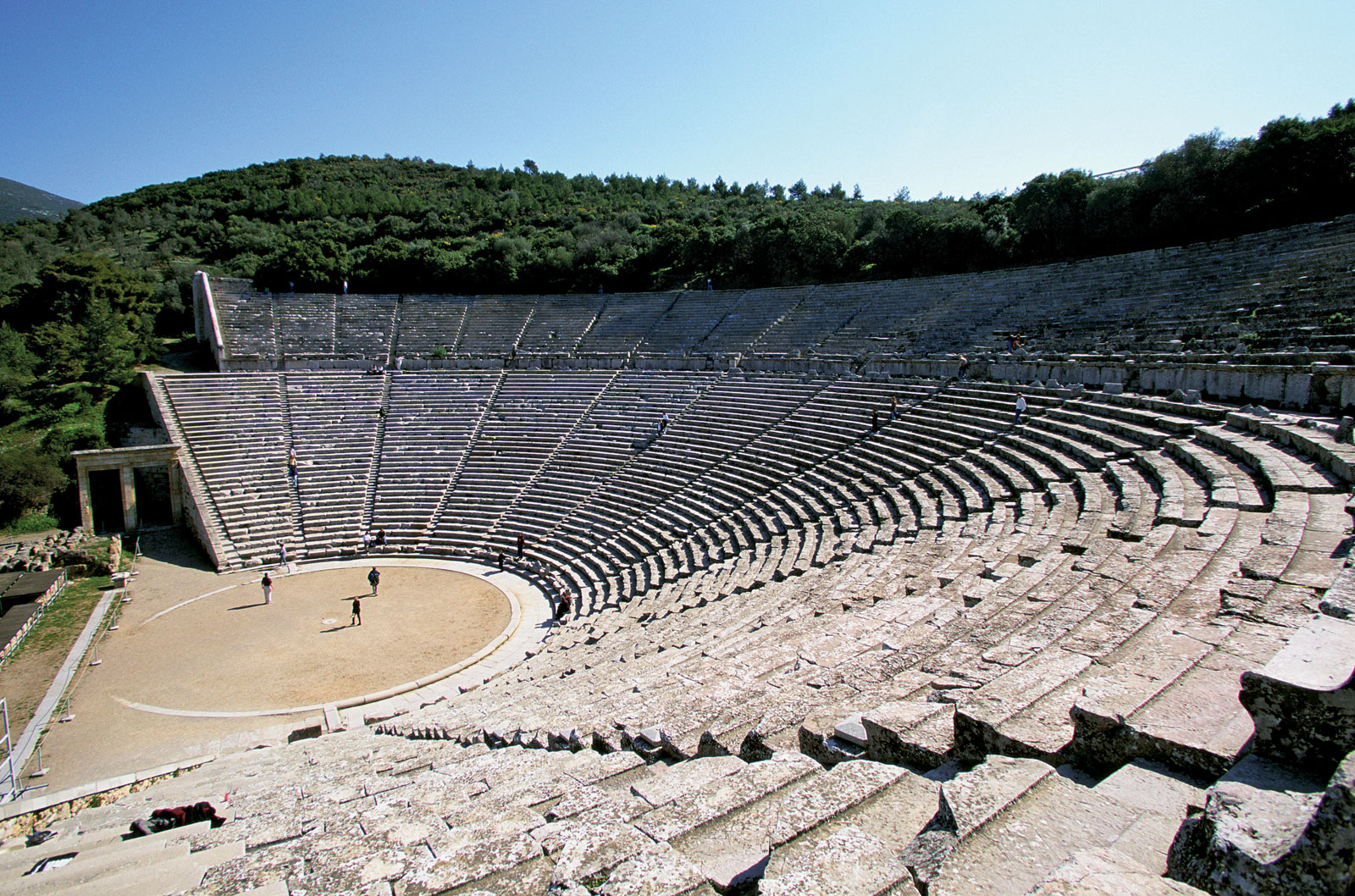[:el]
The theatres were built to host plays, which were originally closely linked to religious rituals. They later evolved independently of religion, culminating in performances by actors and a chorus (combining recital and dancing), with all the features of a theatrical production as we would think of it today, involving stage direction, scenery, stage machinery and theatrical equipment. During the course of their evolution, theatres acquired a central role in the function of the city-state, and became multifunctional, used not only for dramatic and religious performances but also for political purposes linked to the institution of Democracy. It is telling that the ancient traveller Pausanias regards the theatre as one of the basic urban features of a Greek city, along with the agora, the gymnasium and the public administrative buildings, and an important element in recognising cities in the East as being Greek.
These are the 10 most important Greek theatres
1) Theatre of Dionysus in Athens

On the east part of the south side of the Acropolis stand the imposing ruins of is theatre, directly north of the Sanctuary of Dionysos. Most of the remains preserved today belong to the monumental structuring of the theatre by the archon of Athens Lycourgos, in the second half of the 4th c. BC. The core of the theatre, however, dates back to the 6th c. BC. That was when the Archaic Sanctuary of Dionysos was erected, while just to the north of it a circular area was levelled, where the cult performances in honour of the god were carried out. These ceremonies were watched by spectators sitting on the hillside, where wooden seats were placed shortly afterwards. This circular area of beaten earth, approximately 25 m. in diameter, formed the first “orchestra” of what was later to become the theatre. It was from the dithyrambic circle dance of the worshippers of Dionysos that tragedy was born.
In 86 BC, during Sulla’s invasion of Athens, the stage building suffered considerable damage, as did the whole theatre. In the mid-1st c. AD, in the reign of the Emperor Nero, a new stage of impressive dimensions was constructed. The orchestra was restructured into a semicircle and paved with marble. In the mid-2nd or the 3rd c. AD a high logeion was added in front of the stage building.
2) Theatre of the Amphiareion

In the sacred sanctuary of the oracle of Amphiaraos in Oropos, Attica, stood its theatre, where musical and dramatic contests were held every four years following the establishment of the Greater Amphiareia festival in 332 BC.
The theatre of the Amphiareion preserves elements of at least two different phases: the fan-shaped plan of the cavea and the circular orchestra date from Classical times, while the proscenium and the five separate inscribed thrones of the proedria are works of the Late Hellenistic period.
Only a small part of the lower cavea survives, together with the retaining walls of the parodoi.
3) Theatre of Epidaurus

The ancient theatre of Epidaurus was built of local stone on a natural slope of Mt Kynortion at the southernmost edge of the Sanctuary of Asklepios, the seat of the healer-god of antiquity and the greatest healing centre of the ancient Greek and Roman world. The theatre hosted music, drama and singing contests and poetry recitals, spectacles that formed part of the festivals in honour of Asklepios.
The theatre of Epidaurus is considered the most perfect theatral structure of antiquity, thanks to the harmony of its proportions, the symmetry of its parts and its exceptional acoustics. Its symmetry and beauty are praised by Pausanias, who attributes the monument to the Argive architect Polycleitus.
The theatre was constructed according to a unified design governed by mathematical principles influenced by Pythagorean philosophy. More specifically, the overall plan is based on a pentagon centered on the orchestra, around which the cavea is laid out. For the Pythagoreans, this geometric shape expressed the harmony of the parts of a whole.
The capacity of the theatre is estimated at approximately 13,000-14,000 spectators.
4) Theatre of Megalopolis

The ancient theatre of Megalopolis, with the largest capacity in Greece according to Pausanias (Paus. 8,32,1), was designed for a large audience (17,000-21,000 spectators). Set on the left bank of the River Elissonas, in a landscape of exceptional natural beauty, it is less than 2 km from the modern town of the same name. The theatre was built circa 370 BC and was used not only for performances of ancient drama, but also for gatherings of the representatives of the people of Megalopolis and the Arcadian League, as well as festivities connected to the pan-Arcadian worship of Zeus Lycaeus.
The theatre was constructed using the natural slope of the hillside. The semicircular orchestra was 30 m. in diameter, while the cavea, with a maximum diameter of approximately 130 m., was divided into three sections. The columned portico of the Thersilion, built on the south side of the theatre, served as a stage backdrop facing the cavea, a unique innovation in the architecture of theatres incorporated in the fabric of a city. Originally there was a movable wooden stage that was removed and stored in theskenotheke (storeroom) that was constructed at the west parodos. The stone proscenium, whose foundation is preserved today, was built in the Roman period.
5) Theatre of Argos

Cut into the bedrock of the southeast slope of Larissa hill in the 3rd c. BC, the theatre of Argos hosted the musical and dramatic contests of the Nemean Games in honour of Hera, as well as meetings highlighting its political character. Scholars estimate the capacity of the theatre at approximately 20,000 spectators.
The cavea of the monument, with 82 tiers of seats, is divided by five radiating staircases into four wedge-shaped cunei. Two entrances, the north and south parodos, facilitated access to the orchestra.
6) Theatre of Delphi

The theatre of Delphi is the largest structure within the enceinte of the Sanctuary of Apollo, set in its northwest corner, very close to the temple of the god which formed the cult centre. It was built in the 2ndc. BC, although the area of the cavea had probably already been laid out appropriately at an earlier date, for the musical contests that formed part of the Pythian Games. An inscription records that the theatre acquired its monumental form circa 160 BC, with funding provided by Eumenes II of Pergamon. The final form of the theatre dates to the 1st c. BC, while many modifications and repairs were carried out in the Late Roman period.
In the Roman period, the proscenium façade was decorated with a marble frieze carved in relief depicting scenes from the Labours of Hercules. Dozens of inscriptions commemorating the emancipation of slaves and acts of the Amphictyonic League were carved on the stone blocks of the east retaining wall, indicating the public and political character of the monument.
7) Theatre of Eretria

The theatre of Eretria is in the west part of the city, between the west gate, the stadium and the upper gymnasium, while the Temple of Dionysus has been uncovered at its southwest end.
The current form of the monument features elements of the three main building phases, according to the recent excavation data. It is one of the most typical examples of a theatre of the Hellenistic period, whose original form was not particularly affected by the restructurings of the Roman era.
Following the destruction of Eretria by the Romans in 198 BC, the theatre was rebuilt out of poorer-quality materials with the addition of two further side structures, and was probably turned into an arena for secular spectacles.
8) Theatre of Larissa I

The Ancient Theatre of Larissa I, one of the largest and most important theatres in Greece, was built at the southern foot of Frourio (“Fortress”) Hill, on which the fortified acropolis of the ancient city stood. The theatre was built in the early 3rd c. BC. During its first centuries of operation, apart from theatrical performances, it was also used for meetings of the supreme administrative regional body, the Thessalian League. At the end of the 1st c. BC it was turned into a Roman arena and continued to function in this form until the end of the 3rd c. AD.
The theatre is a huge monument, constructed almost exclusively of marble with rich relief decoration.
9) Theatre of Delos

The theatre of Delos was built by the Delians with money from the treasury of the Temple of Apollo, using marble from a neighbouring quarry and local stone, and also marble imported from the islands of Paros and Tinos. The construction of the theatre began circa 310 BC and was completed around 70 years later, circa 240 BC. The theatre was definitively abandoned following the destruction of 88 BC.
Southwest of the theatre are preserved the remains of altars and sanctuaries dedicated to Artemis-Hecate, Apollo, Dionysos, Hermes and Pan.
10) Theatre of Milos

The ancient theatre of the island of Milos in the Cyclades is set on the slope of the hill over which the ancient city spreads, in an impressive site overlooking the bay of Milos. Excavations to date have revealed the orchestra and part of the cavea, the stage building and the west retaining wall. The cavea, constructed on the natural slope of the hill, is in the typical horseshoe-shaped layout of ancient Greek theatres. Seven wedge-shaped cunei with up to nine rows of white marble seats are preserved. Each row contains four to five seats. The orchestra lies approximately 1.70 m. below the level of the paving-stones of the circle, in order to serve as an arena. The vertical rock face between the arena and the circle was faced with marble slabs. Of the stage building, part of the stage and proscenium is preserved, as well as scattered architectural members.
The preserved form of the ancient theatre of Milos dates from the Roman period, although it may originally have been built in Hellenistic times. The architectural elements of the stage building are similar to those of theatres in Asia Minor.
[:]



